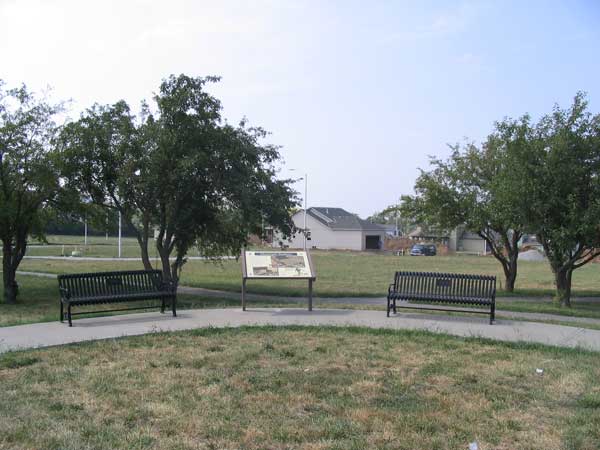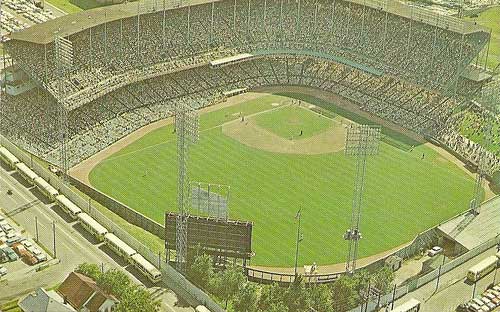
|
Municipal Stadium | |||||||
|
Kansas City, MO
| Teams: Kansas City Monarchs (NNL1 1923-27, 1929-30, NAL 1937-54), Kansas City Athletics (AL 1955-67), Kansas City Royals (AL) 1969-72 | Owner: Kansas City, MO |
| Year Built: 1922 | Cost: $400,000 |
| Years Renovated: 1954-55 | Cost: $2.5 million |
| Dimensions: LF 369 LCF 408 CF 421 RCF 382 RF 353 | Capacity: 16,000 (1922) 35,020 (1955) |
| AKA: Muehlebach Field 1923-37, Ruppert Stadium 1938-42, Blues Stadium 1943-54 |
Memorable Moments

This former frog pond, swimming hole, and pile of ashes was home of Kansas City baseball from July 23, 1923 until 1972. During this time the dimensions and fences changed more than any other ballpark in baseball. This was the home of the Monarchs and the minor league Blues. The Blues were a New York Yankees farm team that often got the dregs of the system. When the Blues were playing, seating was segregated but when the Monarchs were playing, it obviously was not. During a period in the 1930s, former Chicago Cubs catcher Johnny Kling, bought the Blues and desegregated the stadium. In 1938 Col. Jacob Ruppert, Yankees owner, bought the team and re-segregated the stadium causing an uproar in the community. The Monarchs were a much better team anyway. One of the largest events of the year in the Black section of Kansas City was the opening day parade, where everyone got dressed to the nines. J. Leslie Wilkinson, the only white owner in the Negro Leagues and owner of the Monarchs, purchased a portable lighting system in 1929, and the team would barnstorm with them. The lighting system saved the team during the Depression, however, special ground rules had to be set up due to the poor quality of the lighting.
In 1955, the former scoreboard from Braves Field was installed at the base of the left field wall, and the Athletics moved into town. During the years when Charley O. Finley was running the field, he put a zoo beyond right field consisting of a mule, sheep, monkeys, and rabbits. There was also a mechanical rabbit, Harvey, that would pop out of a hole near home and give the umpire new balls. Finley got the idea to win, you needed the same dimensions as Yankee Stadium reducing the right field line to 296 feet. In response, MLB made a rule saying that no new fences could be less than 325 feet. The porch was removed, but a line was painted in its place. If a fielder caught a ball over that line, the PA announcer would say "That would have been a home run at Yankee Stadium." In 1964, Finley paid the Beatles more money to play one show here than he paid his entire team. Ticket sales were slow for the Beatles. In 1965, Finley brought in Satchel Paige pitched three scoreless innings at age 59, striking out one.

© 2006-17 Paul Healey. Old picture © its owner, used without permission.